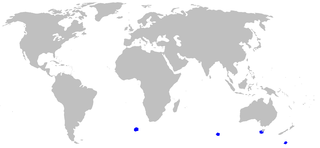
The term narcotic originally referred medically to any psychoactive compound with sleep-inducing properties, and euphoric properties as well. In the United States, it has since become associated with opiates and opioids, commonly morphine and heroin, as well as derivatives of many of the compounds found within raw opium latex. The primary three are morphine, codeine, and thebaine.

The National Commission on Terrorist Attacks Upon the United States, also known as the 9/11 Commission, was set up on November 27, 2002, "to prepare a full and complete account of the circumstances surrounding the September 11 attacks", including preparedness for and the immediate response to the attacks. The commission was also mandated to provide recommendations designed to guard against future attacks.

In chemistry, a suspension is a heterogeneous mixture that contains solid particles sufficiently large for sedimentation. The particles may be visible to the naked eye, usually must be larger than one micrometer, and will eventually settle, although the mixture is only classified as a suspension when and while the particles have not settled out.

The lithology of a rock unit is a description of its physical characteristics visible at outcrop, in hand or core samples, or with low magnification microscopy. Physical characteristics include colour, texture, grain size, and composition. Lithology may refer to either a detailed description of these characteristics, or a summary of the gross physical character of a rock. Examples of lithologies in the second sense include sandstone, slate, basalt, or limestone.

D-norpseudoephedrine, also known as cathine and (+)-norpseudoephedrine, is a psychoactive drug of the phenethylamine and amphetamine chemical classes which acts as a stimulant. Along with cathinone, it is found naturally in Catha edulis (khat), and contributes to its overall effects. It has approximately 7-10% the potency of amphetamine.

Sagittarius (♐︎) is the ninth astrological sign, which is associated with the constellation Sagittarius and spans 240–270th degrees of the zodiac. Under the tropical zodiac, the sun transits this sign between approximately November 23 and December 21. Greek mythology associates Sagittarius with the centaur Chiron, who mentored Achilles, a Greek hero of the Trojan War, in archery.

2,2,2-Trifluoroethanol is the organic compound with the formula CF3CH2OH. Also known as TFE or trifluoroethyl alcohol, this colourless, water-miscible liquid has a smell reminiscent of ethanol. Due to the electronegativity of the trifluoromethyl group, this alcohol exhibits a stronger acidic character compared to ethanol.

The birdbeak dogfish is a dogfish shark of the family Centrophoridae found in the Pacific Ocean around Honshū, Japan, southern Australia, New Zealand, and Chile, and in the Atlantic Ocean from Iceland south to the Cape of Good Hope.

Galidiinae is a subfamily of carnivorans that is restricted to Madagascar and includes six species classified into four genera. Together with the three other species of indigenous Malagasy carnivorans, including the fossa, they are currently classified in the family Eupleridae within the suborder Feliformia. Galidiinae are the smallest of the Malagasy carnivorans, generally weighing about 600 to 900 g. They are agile, short-legged animals with long, bushy tails.

The longnose velvet dogfish is a sleeper shark of the family Somniosidae, found circumglobally in southern hemisphere subtropical seas, at depths of between 230 and 1,500 m. It reaches a length of 130 cm.

The sherwood dogfish is a very rare sleeper shark of the family Somniosidae, found only around New Zealand. The only specimen studied was about 80 cm long.

McMillan's catshark is a catshark of the family Scyliorhinidae, in the order Carcharhiniformes. McMillan's cat shark is a small, rare and little-known deepwater shark. It is endemic to New Zealand. This species is found in the deep waters of the lower continental slope around New Zealand, on the West Norfolk Ridge and off North Cape. This species can be found at depths of 985-1350m. It can grow up to a length of 45 cm.

The whitetail dogfish is a very rare sleeper shark of the family Somniosidae, found from the eastern Indian Ocean round southern Australia to New Zealand, at depths of between 150 and 500 m. Its length is up to 1.1 m.

The flaccid catshark is a catshark of the family Scyliorhinidae. It is endemic to the waters around New Zealand.

In biological classification, taxonomic rank is the relative level of a group of organisms in a taxonomic hierarchy. Examples of taxonomic ranks are species, genus, family, order, class, phylum, kingdom, domain, etc.
Asian people or Asiatic people are people who descend from a portion of Asia's population.
Vexilliferidae is a family of Amoebozoa, classified under Dactylopodida.
Chodsigoa is a genus of shrews in the tribe Nectogalini.

Palaeomedusa testa is an extinct species of sea turtle from the Tithonian of the Late Jurassic. It was first described by the German palaeontologist Christian Erich Hermann von Meyer in 1860. It is the only species classified under the genus Palaeomedusa.

John R. Clarke is an American scientist, private pilot and author. He is currently the Scientific Director at the United States Navy Experimental Diving Unit (NEDU). Clarke is recognized as a leading authority on underwater breathing apparatus engineering.
















